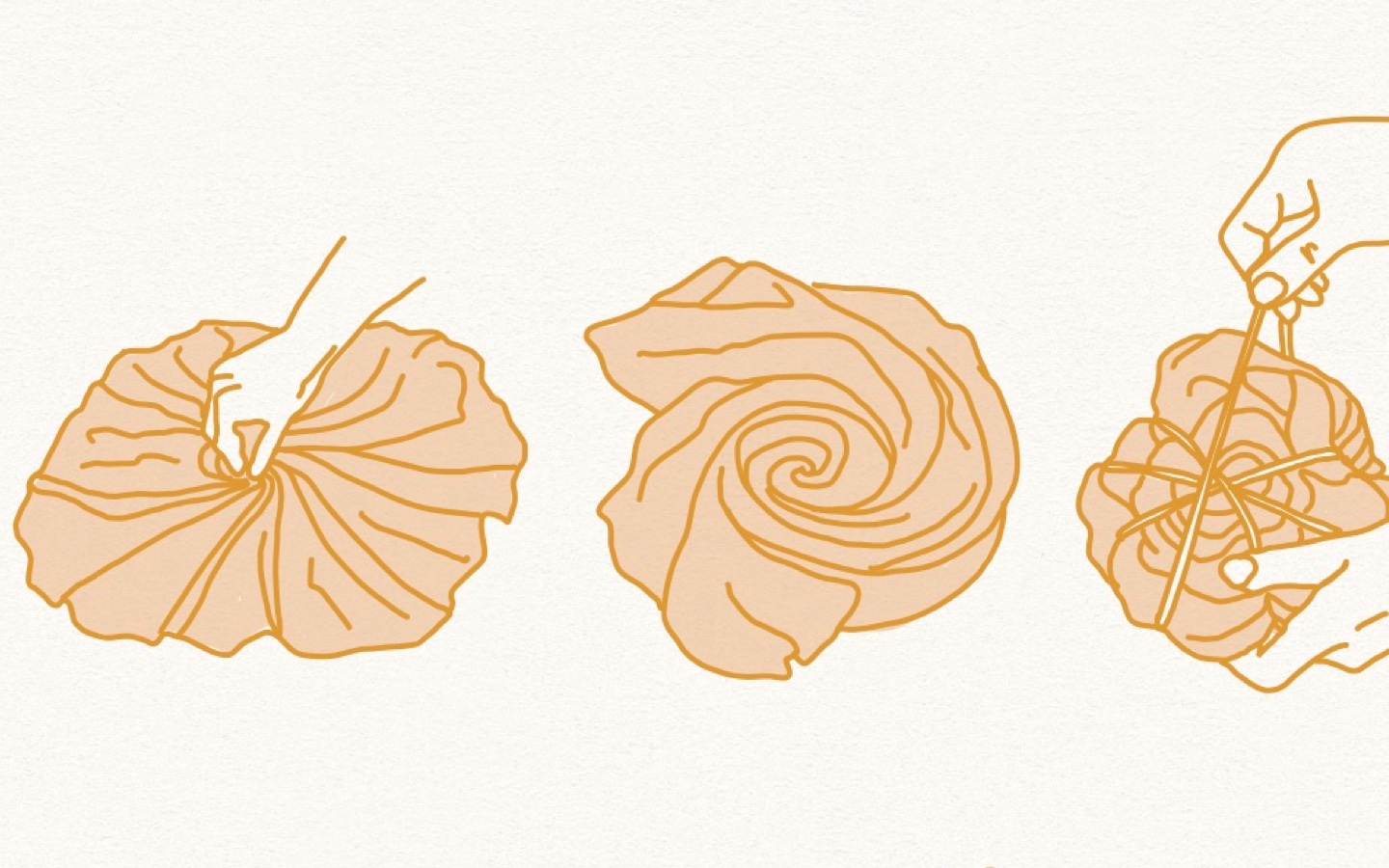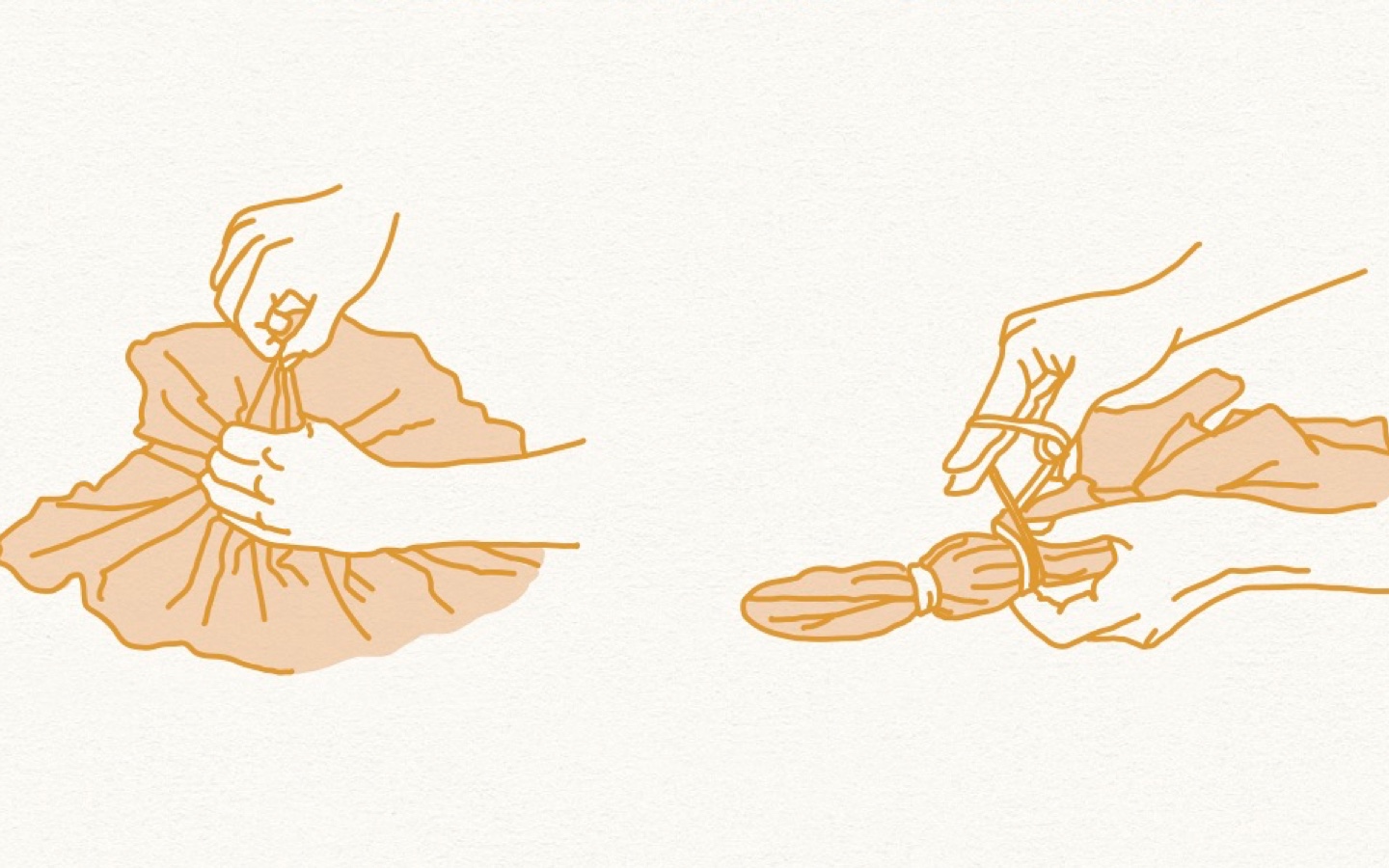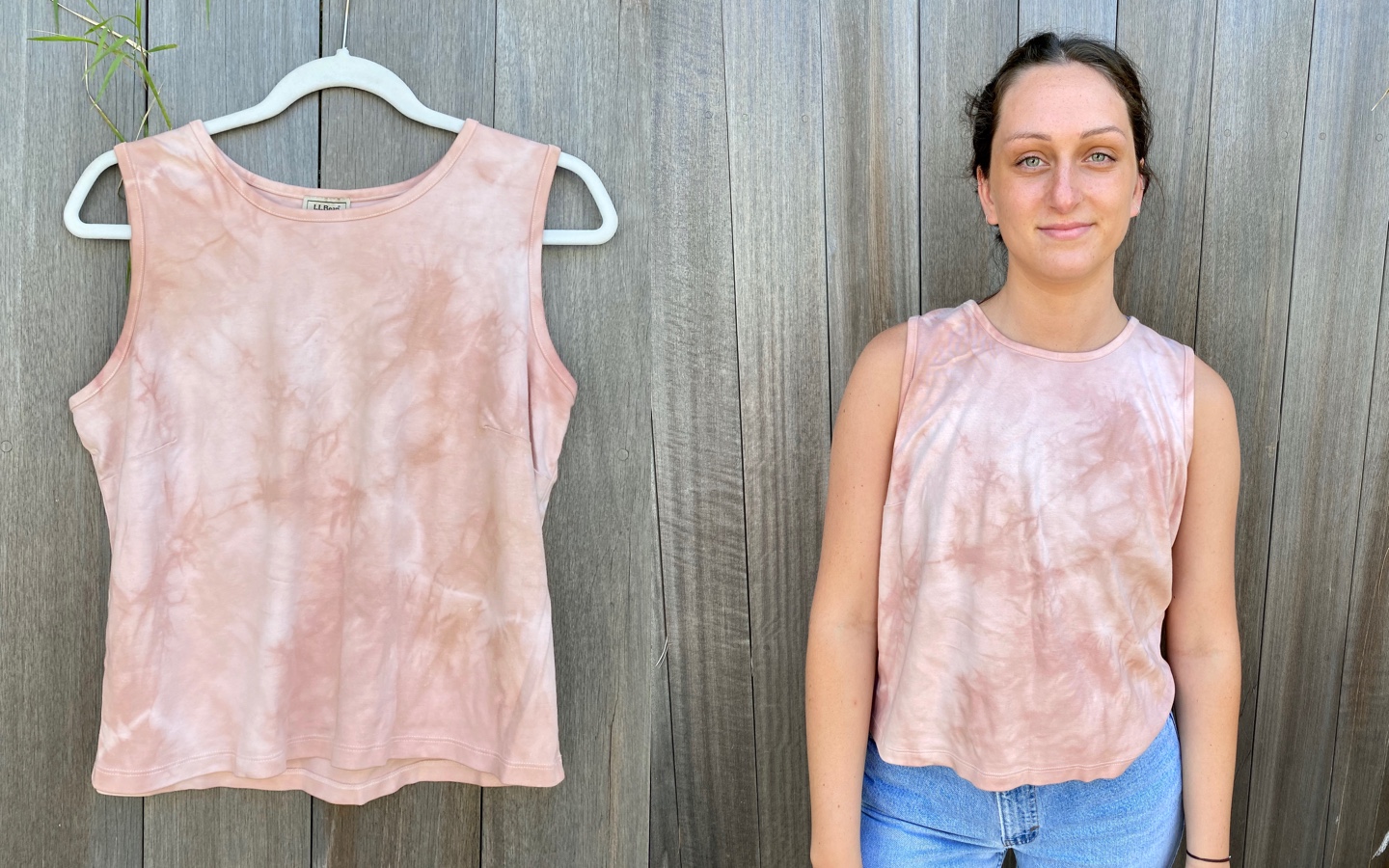This simple, illustrated guide will teach you how to give your food scraps a second life before being (appropriately) discarded.
I first learned about natural dyes in art school, when my textiles professor had brought in a pillowcase full of black walnuts she had foraged from the woods in Michigan. She told me I could create a natural dye bath by boiling down these black walnuts. This natural dye bath would turn a plant-based fabric, such as cotton or silk, into rich colors ranging from a light maroon to a warm brown. After seeing how easy it was to dye fabric from plant-based materials, I was hooked on trying out every natural dye I could find.
I started experimenting with foraged plants, common herbs and spices, and food scraps (that are probably sitting in your kitchen trash right now!). Some of my favorite natural dyes found in the kitchen include avocados, red onions, carrot tops, spinach, and turmeric, just to name a few. It’s a sustainability no brainer — repurpose food scraps into fun projects before they are discarded for good.
This natural dye how-to is part of a series of simple guides to empower others to utilize their existing resources. Especially as the tie-dye trend resurges, it’s cool to know that you can use foraged plants or food waste to dye clothing instead of chemical-based dye.
My first natural dye guide features the avocado! Wait, you can dye fabric with avocados? Yes! Avocado is a substantive dye. The skins and pits will dye fabric a blush pink color. Avocado pits contain tannins. Tannins are a natural mordant, which bond the dye to the fiber.

Step 1: Prep your avocados
Collect avocado pits and skin. I like to save the pits and skins over the course of a week or two and let them dry out on my windowsill. You’ll also need a wooden spoon and a big old pot. An aluminum pot will help develop the dye into a richer color. Do not dye fabric with the same utensils and pots you cook with!
Step 2: Make your dye
Put all the dried skins and pits into your pot. Fill it with enough water to fully submerge your skins and pits. Turn up the heat! Bring your pot to a boil for about 20 minutes. Then dial it down to a low simmer for an hour.
Step 3: Prep your fabric
Natural fibers, such as cotton and silk, work best. Wash your fabric in hot water before dyeing. It will strip away any existing residue. Fold, scrunch, or twist your fabric to create patterns. Secure with rubber bands or twine.

Step 4: Ready to dye!
Strain the pieces of avocado out of your dye bath. Put your pot back on a low simmer. Dunk fabric in your dye bath until fully submerged. Simmer on the stove for about an hour. The heat helps the dye naturally bind to the fibers. Take your pot off the stove and leave it covered outside overnight.
Step 5: Give it time
The longer your fabric soaks, the more saturated your colors become. Adding in additional mordants, such as iron and copper, can also help darken colors. Throw pennies or a rusty object into your dye bath (after you take your pot off the heat) to see how your fabric reacts.
Step 6: Rinse
After your fabric has chilled out in the dye for a few days, rinse it with lukewarm water and hang dry in the shade. Enjoy your natural and sustainably-dyed fabric!

Take pictures of your natural dye experiments and share them with us! You can keep up with Dana and all her natural dyes through her Instagram @cmpbllstudio.

Shop Pillows
The Essential Organic Pillow Collection
Gentle, breathable, non-toxic support.







